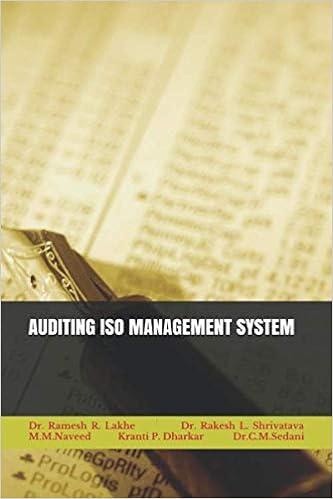Question
Cotopaxi makes backpacks. Traditionally, they bought fabric in quantity, and cut out the forms for their backpacks from large pieces, discarding the interstitial material as
Cotopaxi makes backpacks. Traditionally, they bought fabric in quantity, and cut out the forms for their backpacks from large pieces, discarding the interstitial material as scrap. Due to the integrated nature of the production facility, the cost of all this fabric was considered a joint cost, allocated by the approximate relative sales value method, and the scraps were considered a waste by-product. Recently however, an enterprising employee had the great idea to use these scraps and make small, unique bags from the heretofore-discarded pieces of fabric. The company agreed to implement this idea on a trial basis, and the accounting department decided to consider these bags a by-product using the net realizable value method. The marketing department set the price for the by-product bags at $50, and in the first year of production, 10,000 of these scrap bags were sold. At the end of the first year, the accounting department determined that each bag incurred an additional processing cost of $40 on average in additional materials (straps, buckles, thread, etc.), labor, and variable overhead (not including the cost of the scrap fabric from whence they came).
How much additional income does selling the by-product bags earn Cotopaxi (per bag)?
-$40 per bag (loss)
$0 per bag
$10 per bag
$40 per bag
$50 per bag
What is the amount of Joint Cost, under the Net Realizable Value method, that will be allocated to each by-product bag?
-$40 of Joint Cost per bag
$0 of Joint Cost per bag
$10 of Joint Cost per bag
$40 of Joint Cost per bag
$50 of Joint Cost per bag
Given your answers to the two previous questions, and recalling that Cotopaxi uses the net realizable value method to account for the by-product bags, how much profit per bag will be recognized by the by-product bag division?
-$40 per bag (loss)
$0 per bag
$10 per bag
$40 per bag
$50 per bag
Step by Step Solution
There are 3 Steps involved in it
Step: 1

Get Instant Access to Expert-Tailored Solutions
See step-by-step solutions with expert insights and AI powered tools for academic success
Step: 2

Step: 3

Ace Your Homework with AI
Get the answers you need in no time with our AI-driven, step-by-step assistance
Get Started


